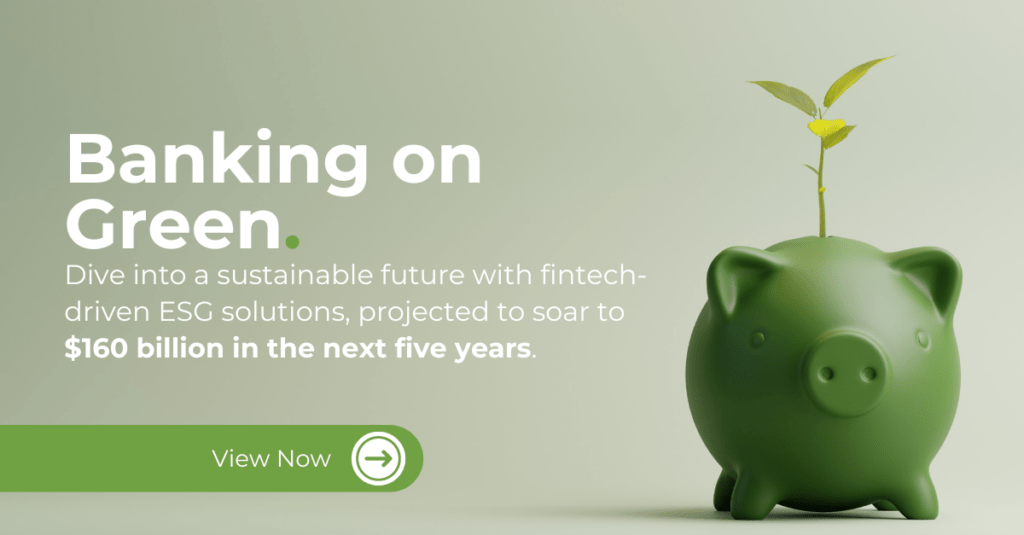Thailand, often celebrated as the “Land of Smiles,” is a nation where warmth and friendliness are as much a part of the culture as its vibrant street markets and stunning temples. This nickname, popularised by a tourism campaign in the 1980s, highlights the country’s welcoming spirit and subtly emphasises a profound understanding of service and hospitality. Yet, to consider Thailand solely through the lens of its tourism slogan is to overlook the complexity of the cultural, economic, and social elements that shape the preferences and behaviours of Thai consumers.
Understanding the Thai consumer is about acknowledging external friendliness and appreciating the underlying cultural values, economic conditions, and social dynamics that influence purchasing decisions.
From the influence of Buddhism, which instils a sense of zen, to the strong ties of family and community that guide daily life, these cultural underpinnings play a significant role in shaping consumer behaviour in Thailand. Marked by a growing middle class with increasing purchasing power, Thailand presents unique opportunities and challenges for domestic and international brands.
Also read: “How Thailand is Strategically Positioned for International Expansion, here.
Cultural Background of Thailand
Thai Culture, Traditions, and Values
Thai culture is rich in traditions and values that reflect the country’s long history and ethnic diversity. Respect, humility, and kindness are deeply ingrained in Thai society, influencing social interactions and behaviours. The traditional Thai greeting, the “wai,” where a person bows with palms pressed together, symbolises respect and is a key example of the polite manners expected in Thai culture. This emphasis on respect extends to a deep reverence for the monarchy, which plays a central role in Thai identity and unity.
Thai traditions are also closely connected to the agricultural calendar, with festivals such as Songkran (the Thai New Year) and Loy Krathong (the light festival) reflecting the country’s agrarian roots. These celebrations are significant for their cultural value and influence consumer behaviour, as they are times of increased spending on food, gifts, and entertainment.
Influence of Buddhism and Its Impact on Consumer Behavior
Buddhism is the predominant religion in Thailand, shaping the country’s moral framework and daily life.
Buddhist principles of karma (the belief that good deeds lead to a better life) and moderation influence Thai people’s approach to consumption.
There’s a tendency toward mindful spending, with many Thais valuing experiences and personal growth over material wealth. This doesn’t mean they avoid purchasing goods; rather, they prefer products that offer value in terms of quality and sustainability, reflecting a broader ethical consumption trend.
Buddhist holidays and rituals also impact consumer patterns, with certain periods dedicated to fasting or abstaining from alcohol, which can affect sales in relevant industries. Brands often participate in activities promoting goodwill, like donating to temples or charities, which can enhance their reputation and appeal to ethically-minded consumers.
Role of Family and Social Structures in Shaping Purchasing Decisions
Family is the cornerstone of Thai social life, often extending beyond the nuclear family to include a wide network of relatives. Decision-making is collective, with a high value placed on harmony and the group’s well-being over individual desires.
This collective approach influences purchasing decisions, with products and services that cater to family and social activities often seeing higher demand.
Social structures in Thailand also emphasise seniority and hierarchy, which can influence consumer behaviour.
Products or brands perceived as status symbols or confer prestige can be particularly appealing, as they reflect well on an individual’s social standing. Additionally, word-of-mouth and recommendations from respected community members can significantly impact consumer choices, making influencer marketing and community engagement crucial business strategies.
Consumer Behavior Trends in Thailand
General Consumer Behavior Trends in Thailand
The consumer market in Thailand is transforming, with increasing confidence and a growing preference for digital platforms and sustainability. According to a survey by The University of the Thai Chamber of Commerce, Thai consumer confidence reached its highest level in 48 months in February due to government stimulus measures and a rebound in tourism that revitalised economic activities.
Consumer confidence slightly dropped from 63.8 to 63 points in March due to the rise in the cost of living and the economy. So, brands must understand the changing consumer behaviours to adapt their marketing strategies to attract budget and value-conscious consumers.
Thai consumers are also increasingly drawn to digital consumption, with a notable shift in interest toward sustainable living and convenience. Searches for “restaurants near me” and “sustainability” have seen significant upticks on Google, highlighting a consumer base that values environmental considerations and ease of access.
Attitudes Toward Local Versus International Brands
Thai consumers show a nuanced approach to brand preference, balancing local authenticity and international quality. There is also a preference for direct interactions with brands via their websites over social media channels.
Around 70% of Thai consumers reported that more than half of their journey stages, including inspiration, search, and purchase, occurred online.
Source: A survey by The Nation News
This shift is attributed to a desire for clear incentives, accurate product descriptions, and the appeal of free delivery options. Interestingly, Key Opinion Leaders (KOLs) have emerged as significant influencers in purchase decisions, more so than family or traditional advertising channels.
Trends in Digital Consumption, Including Mobile Usage and Online Shopping Habits
Thailand is the second-largest digital economy in Southeast Asia, just after Indonesia, according to Statista. The e-commerce market in Thailand comprises around 43.5 million consumers, with a gross merchandise value of $19 billion. The market is mainly dominated by younger Thais, with those aged between 17-36 accounting for 62 percent of the market. Thais aged between 37-50 account for 33 percent, while those aged between 51-71 make up 5 percent of the market.
Shopee, Lazada, Central, Hompro, Jib, and Kaidee are popular e-commerce sites in Thailand with advanced logistics and delivery infrastructure primarily used by sellers.
Almost half of Thailand’s online shoppers have made cross-border e-commerce purchases.
Cross-border e-commerce accounts for 30% of the country’s e-commerce market.
A marked increase in search interests for financial literacy, including investments and cryptocurrencies, indicates a more financially savvy population. The online shopping sector reflects a diverse and discerning consumer base. While traditional e-commerce platforms like Shopee and Lazada continue to attract users, there’s a noted increase in purchases made directly from brand websites, driven by the pursuit of better deals and more detailed product information.
45% of Thai consumers plan to increase their online shopping in 2024
Source: Neilson
Digital consumption extends beyond shopping to encompass a broader lifestyle shift towards a seamless online-offline integration. Consumers are embracing hybrid experiences that allow for the convenience of online discovery and transactions, along with offline engagements. The rising popularity of “buy now pay later” schemes, virtual try-ons, and booking apps underscores a lifestyle that values flexibility and blending digital convenience with physical experiences.
At the beginning of 2023, Thailand had approximately 61.21 million internet users, equivalent to 85.3% of the total population. The country also registered 101.2 million mobile connections and 52.25 million social media users.
Source: Digital 2023
Key Sectors and Product Preferences in Thailand
- Technology: The technological market in Thailand is vibrant, with international brands like Samsung and Sony being prominent players. These brands, alongside domestic ones, cater to a digitally savvy Thai population that has rapidly embraced e-commerce and digital solutions, especially in light of the pandemic’s push towards online shopping.
The market value of e-commerce will reach $32 billion by 2025.
Source: The E-Commerce Association
Mobile devices are responsible for over 80% of all online sales in Thailand, and 23% of all transactions are made through mobile wallets. It is predicted that by 2025, the prevalence of mobile wallets in Thailand will increase to 63%.
- Fashion: In the fashion sector, e-commerce has seen a significant boom, with fashion items, including clothes and footwear, accounting for 60% of the total market, according to Trade Gov. Both international and local fashion brands have capitalised on this trend, focusing on online sales channels to reach their customers.
- Food and Beverage: The food and beverage industry has witnessed a surge in interest in plant-based alternatives, aligning with global trends towards sustainability and health.
According to a Statista survey conducted in April 2023, Thais aged between 25-34 years old were found to be the leading age group ordering food delivery at least three to six times per week in Thailand.
GrabFood, LINE MAN, Food Panda, and Shopee Food are some of the key players in Thailand’s food delivery market, with Grab holding the highest market share.
The value of the food delivery market in Thailand has reached around 400 million U.S. dollars.
According to Statista, the Thai beverage industry is mainly focused on domestic consumption, with almost 80% of its production being consumed in Thailand. Despite the inflated cost of living, the sluggish global economy, and ongoing conflicts, the demand for beverages has gradually recovered.
In 2022, the beverage industry grew by 2.8%, ranking second among consumer goods with the highest growth rates.
Source: Statista
In the upcoming years, the overall trading of alcoholic and non-alcoholic beverages may increase slightly as the local market continues to thrive, despite the challenges faced in exports.
- Beauty Products: The beauty sector is experiencing growth through e-commerce, supported by international giants like Amazon and Tmall and direct-to-consumer brands.
It is projected that the revenue in the Beauty & Personal Care market in Thailand will reach US$6.67bn by 2024.
Source: The Global Wellness Institute
Consumers demand an omnichannel experience, and brands are recognising the importance of in-store experiences alongside online shopping.
Preferences for Sustainable and Eco-Friendly Products
Sustainability plays a crucial role in shaping consumer preferences in Thailand, with 44% of Thai adults strongly prioritising products or services with strong environmental credentials. For more detailed insights, read our comprehensive report, “The Green Brand,” which offers an in-depth analysis of sustainability practices across ten countries, Thailand included.
Impact of Health Consciousness on Consumer Choices
Health consciousness significantly impacts consumer choices, with a continued focus on wellness influencing food and beverage preferences.
A study by Thailand’s Commerce Ministry has found that the country’s health economy has a great potential for growth as people around the world are becoming more aware of the importance of health and self-care.
A strong inclination toward digital consumption, sustainability, and health-conscious choices characterises Thailand’s consumer market. These trends are shaping the strategies of both international and domestic brands across key sectors, emphasising products and services that align with these evolving consumer preferences.
Marketing Strategies Tailored to the Thai Market
- Cultural Sensitivity: Understand and respect Thai customs and values. Incorporating elements of Thai culture into marketing materials shows respect and can enhance brand perception.
- Social Media Utilisation: Leverage platforms like Facebook, Instagram, and LINE, which are popular in Thailand. Tailoring social media campaigns that engage with Thai users can significantly increase brand visibility.
- Local Influencers: Collaborate with Thai influencers who resonate with your target audience. Their endorsement can build trust and credibility among potential customers.
- Localised Content: Ensure all marketing materials are available in Thai, and adapt your messaging to reflect local interests and linguistic nuances to connect more deeply with Thai consumers.
Case study: AirAsia
AirAsia’s success in Thailand can be attributed to a strategic blend of clear branding, cost-effective operations, and strong management practices.
Source: AirAsia
Here’s a breakdown of how these strategies played out:
- Clear and Compelling Branding: “Everyone Can Fly”
AirAsia’s tagline “Everyone can fly” encapsulates the airline’s mission to make air travel affordable for a broader audience. This powerful message directly appeals to cost-conscious consumers, offering them the possibility to travel by air, which was previously considered a luxury for many. By democratising air travel, AirAsia tapped into a new segment of the market, increasing its customer base significantly.
- Low-Cost Model: Operational Efficiency
The core of AirAsia’s business strategy is its low-cost model, which is pivotal in maintaining its competitive edge. By focusing on minimising operating costs, which account for 32.2% of its strategy, AirAsia is able to offer significantly lower fares compared to traditional carriers. The airline achieves these savings through various means, such as using a single aircraft type to reduce training and maintenance costs, maximising the utilisation of planes with quick turnaround times, and selling tickets primarily online to cut down on commission fees to travel agents.
- Strong Management and Quality Control
Although it’s the aspect that receives the least emphasis at 27.8%, developing a strong management team and emphasising quality control are critical to AirAsia’s success. Effective management teams ensure that operations run smoothly and efficiently, essential in a low-cost carrier model with tight profit margins. Also, maintaining high-quality customer service and safety standards enhances customer trust and satisfaction, leading to repeat business and a positive reputation in the competitive airline market.
AirAsia’s success in Thailand results from its ability to combine a strong value proposition with efficient operations and effective management. This approach satisfies the immediate needs of price-sensitive customers and builds a sustainable business model that can adapt and thrive in the evolving aviation landscape.
Case Study: McDonald’s Thailand’s Viral TikTok Challenge
Campaign Overview
To connect with a vibrant and digitally savvy Thai audience, McDonald’s Thailand embraced a fun and engaging TikTok trend that originated in Indonesia. The campaign cleverly adapted this trend to the Thai cultural context, integrating local flavours and customs, culminating in a tailored product launch that significantly boosted sales and enhanced customer engagement across Thailand.
The campaign was designed to capture the attention of Generation Z in Thailand, a demographic that predominantly interacts with brands through social media. Engaging this segment effectively was crucial for capturing a substantial market share.
Creative Strategy:
When a soft serve ice cream eating hack went viral in Indonesia, McDonald’s Thailand saw an opportunity not just to replicate but to ‘Thai-fy’ the trend. This approach not only embraced the viral nature of the original content but also added a unique local twist that resonated well with Thai consumers.
The original trend involved customers combining multiple orders of soft serve into a large bowl, creating an enjoyable and shareable experience. This concept quickly gained traction on TikTok, gaining widespread popularity and user engagement.
Campaign Roll-out:
Leveraging TikTok’s dynamic platform, McDonald’s Thailand used ads to amplify user-generated content rather than creating traditional advertisements. This strategy utilised organic posts from the community, enhancing the authenticity and relatability of the campaign.
To deepen the campaign’s cultural resonance, McDonald’s introduced a new menu item: a special ice cream cone designed for smashing into a bowl, celebrating the communal and fun nature of Thai eating habits.
They further incentivised participation by offering bowls in-store with each purchase of the new item, encouraging customers to engage with the trend physically and digitally.
Market Impact:
Previously, McDonald’s Thailand faced challenges in converting social media engagement into tangible sales. This campaign marked a turning point by effectively integrating an online trend with offline purchasing. The introduction of a culturally tailored product, combined with the strategic use of native TikTok ads, led to a staggering 130% increase in soft serve sales and an 83% rise in in-store foot traffic month-over-month.
The new ice cream cones quickly sold out across the country, demonstrating the campaign’s immense popularity and effectiveness.
The success of this initiative showed how McDonald’s could seamlessly integrate digital trends with physical products, leading to substantial business growth and stronger connections with the local community.
Final Thoughts
The Thai consumer is characterised by a complex interplay of cultural authenticity, sustainability, digital innovation, and global influences. Brands looking to capitalise on this market must navigate these trends by offering clear value, engaging directly with consumers, and adapting to the growing demand for sustainability and digital convenience.
The rise of KOLs and a preference for direct brand interactions over social media suggest that personal recommendations and trust drive consumer behaviour in Thailand. As digital platforms continue to shape consumer preferences, brands offering an integrated online-offline experience and a commitment to sustainability will resonate with Thai consumers.
As a global market research agency with a strong foothold in Western and Asian markets, including Thailand, we are ideally positioned to help brands understand and engage with these dynamic consumer trends. Connect with us to leverage your brand’s potential in Thailand and beyond, ensuring your strategies are informed, relevant, and competitive.




 Senior Marketing Executive
Senior Marketing Executive Sales & Marketing
Sales & Marketing General Manager PR -Internal Communications & Government Affairs
General Manager PR -Internal Communications & Government Affairs Vital Strategies
Vital Strategies
 Customer Intelligence Director
Customer Intelligence Director